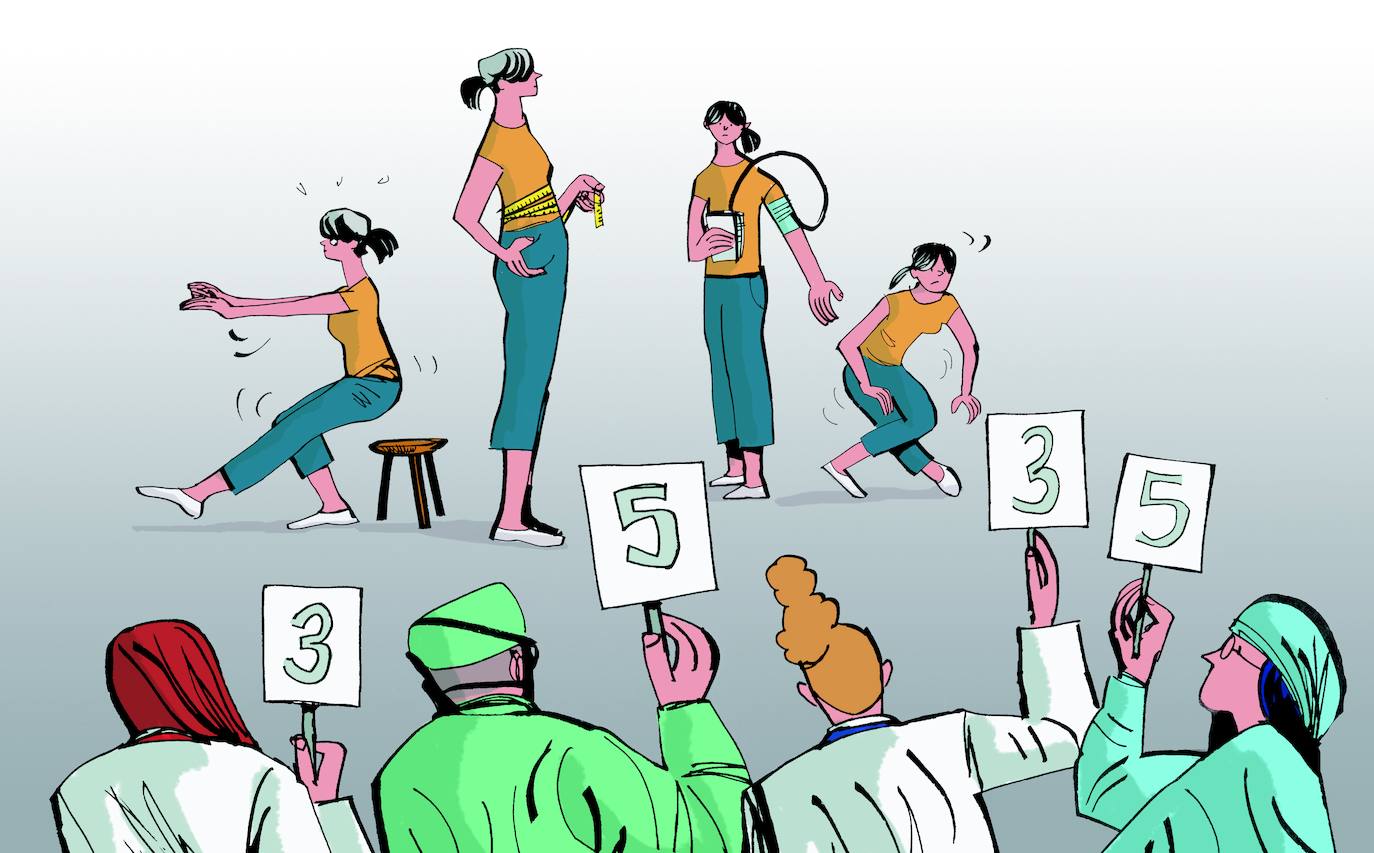Test your fitness at home with these simple exercises
Balance, getting up without support, the step test and waist measurement show whether you've let yourself go
MARTA FERNÁNDEZ VALLEJO
Thursday, 5 January 2023, 16:25
Am I in good physical shape? It's a question we start to ask ourselves after a certain age, especially if we don't test ourselves by going to the gym. To answer it, we might consider how we feel when we walk up a flight of stairs at a good pace - do I feel tired or not? - or after running to catch a bus, or when we're about to step on the weighing scales.
The best way to know how healthy we are is to have a medical check-up, but to self-diagnose our state of health there are certain simple exercises which can be done at home and some body parameters which are easy to measure. These can give us reliable clues as to whether we are in good shape or have been neglecting ourselves. They can even give us an idea of the health risks we face.
Physical trainers and doctors propose that we try the following exercises.
Balance
Balance tests can predict future cognitive impairment, risk of falls and injuries of the musculoskeletal system.
"People who fail to perform these tests in the minimum time frame have sarcopenia (loss of muscle mass, strength and function) and risk factors for cardiovascular problems, type 2 diabetes and obesity," says Javier Rubio Pérez, a specialist in sports medicine and member of the governing board of the Spanish Society of Sports Medicine.
To test yourself, see if you can do this: .
Get up from a chair: This is an easy and objective way of assessing your physical condition. "The exercise consists of sitting down and getting up from a chair without using your hands (keep them crossed in front of your chest) as many times as possible for one minute," Rubio Pérez says.
A woman aged between 50 and 54 should be able to do this at least 23 times and up to 60, and a man aged between 30 and 34 should be capable of a minimum of 23 and a maximum of 72.
There is a more demanding version of this exercise, too: can you get up from a chair with one leg stretched out and without using your hands, with only the support of the other leg?
Standing on one leg: If we can do this for ten seconds after the age of 50 to 55, it can be a sign of good health. A study published in the British Journal of Sports Medicine concluded that people who can't do it could have double the risk of dying early. Unlike endurance, strength and flexibility, "balance is normally maintained well until the age of 60, which is when it starts to deteriorate relatively quickly," says Diego Sánchez, a physical trainer who specialises in fitness for elderly people.
Get up off the floor
The exercise of sitting down and getting up from the floor without the support of hands or kneeling reflects muscle strength, flexibility, balance and body composition (weight).
"There are studies to show that this ability is a good predictor of mortality through any factor," Sánchez says. You get ten points if you don't use your hands or knees and lose a point for every 'help' (hand, forearm, knee or part of the leg in contact with the floor). Those with fewer than eight points have twice the risk of death in the following six years.
"There is some logic to this, because this difficulty in getting up is associated with a sedentary lifestyle and excess weight, muscular atrophy, sarcopenia (loss of muscle) and osteoporosis, all of which are risk factors for cardiovascular problems and falls," Sánchez says.
Heart rate
The heart rate at rest is a way of measuring the health and physical condition of the heart. For most adults a healthy rate between 60 and 100 beats a minute. A lower one is a sign of being in good physical shape, as in the case of athletes.
The step test: This assesses endurance, an essential physical quality which tests the heart and respiratory system more than the musculature.
Take your pulse before starting. Climb a 35-centimetre step for three minutes with one leg and then three minutes with the other. Stop and take your pulse again. Subtract the resting heart rate from that figure.
If you are under the age of 45 you have passed the test if the result is between 60 and 69. Above that age, more than 65 points means you have failed and fewer than 49 shows that you have excellent endurance.
Waist measurement
"Accumulated fat around the waist is a sign of someone's cardiovascular risk, even if they have a normal body mass index. It gives an idea of central obesity, in other words the amount of fat accumulated around the abdominal organs," warns Dr David Rubio. "Excess body fat has been associated with an increased likelihood of developing metabolic syndrome, type 2 diabetes, certain types of cancer, degenerative diseases in the musculoskeletal system, anxiety and depression," he says.
The WHO considers the maximum healthy abdominal circumference for women to be 88 centimetres, and 102 centimetres for men. Coronary risk increases by 40 per cent if the waist is more than 14 centimetres above those limits.


Comentar es una ventaja exclusiva para registrados
¿Ya eres registrado?
Inicia sesiónNecesitas ser suscriptor para poder votar.